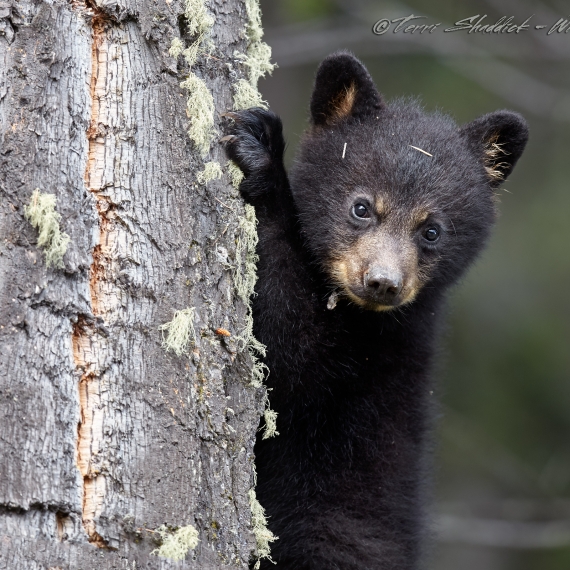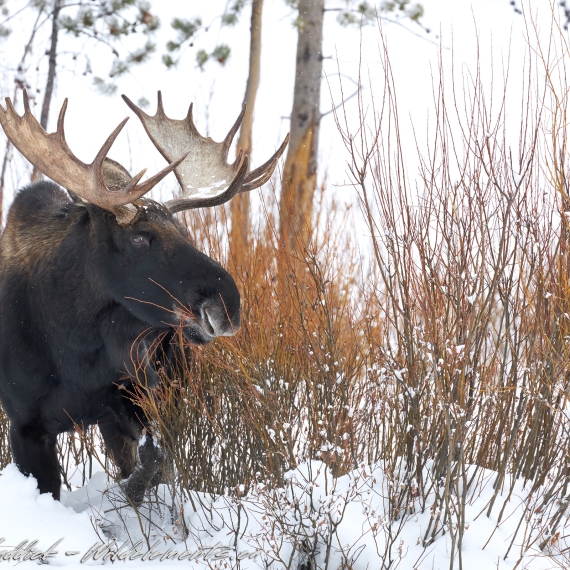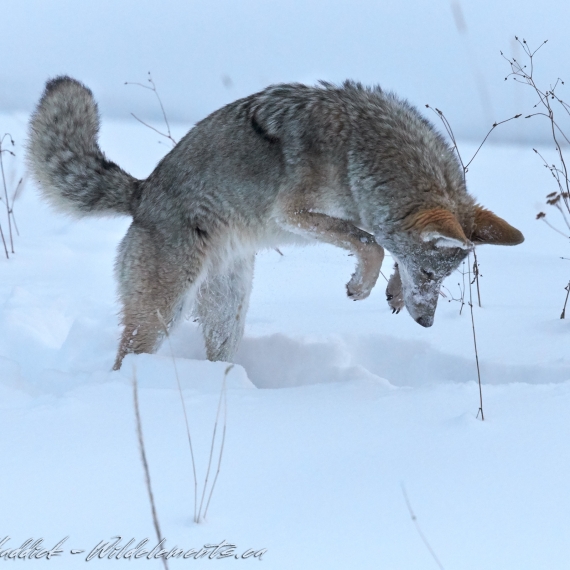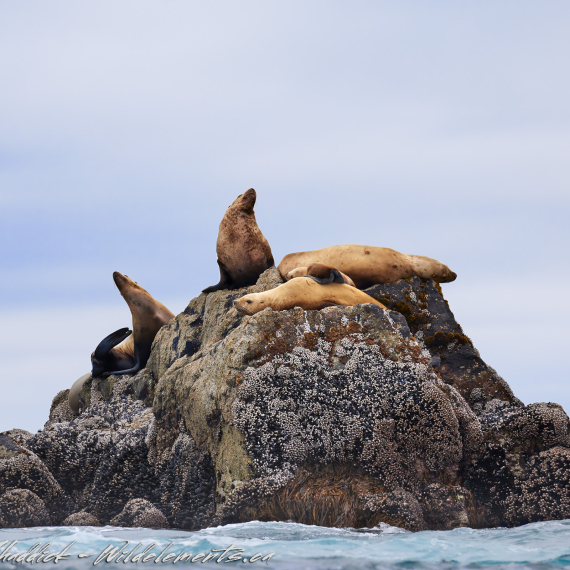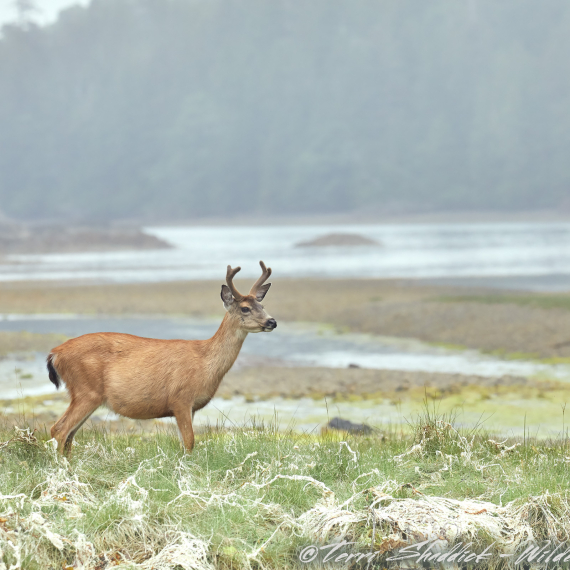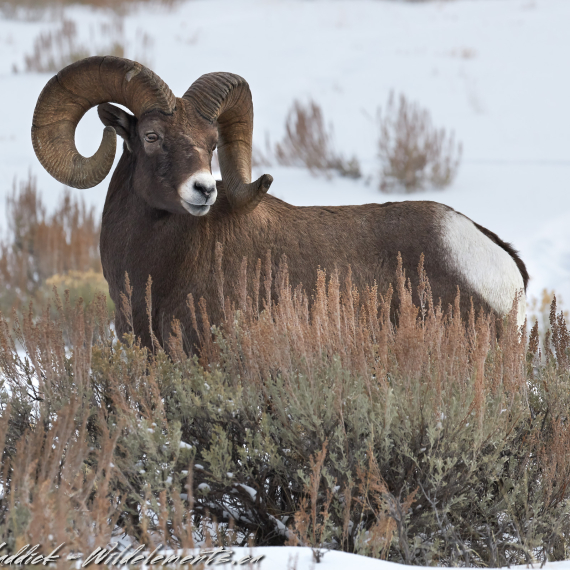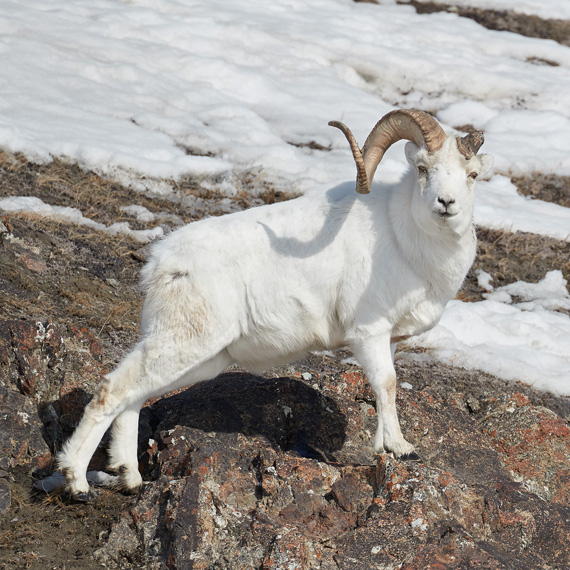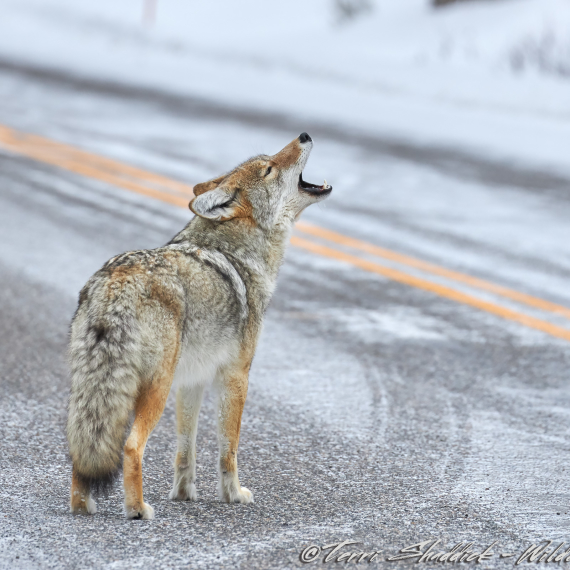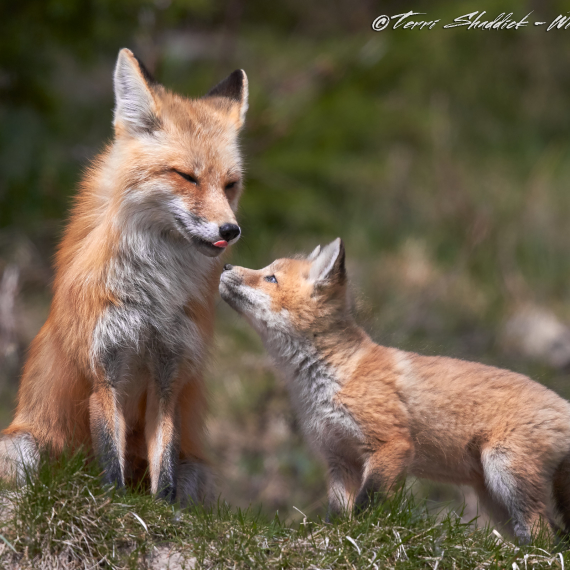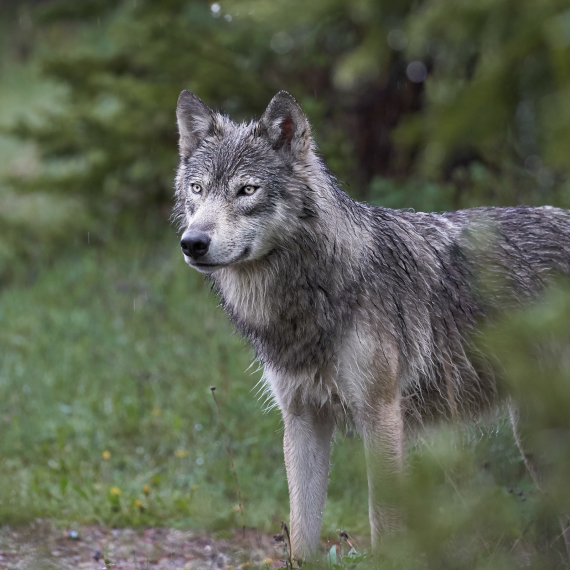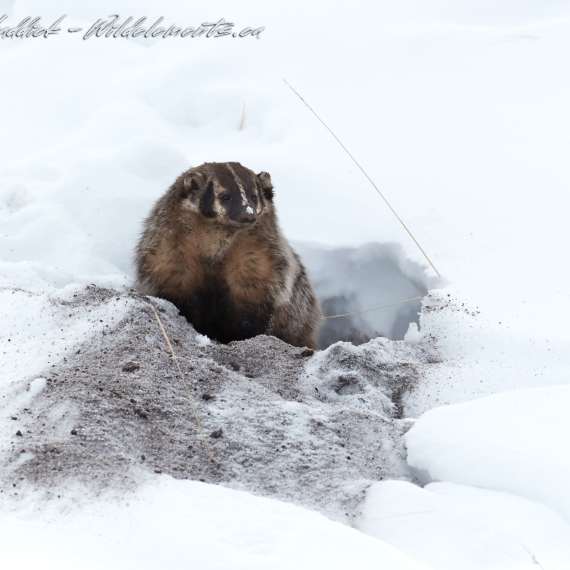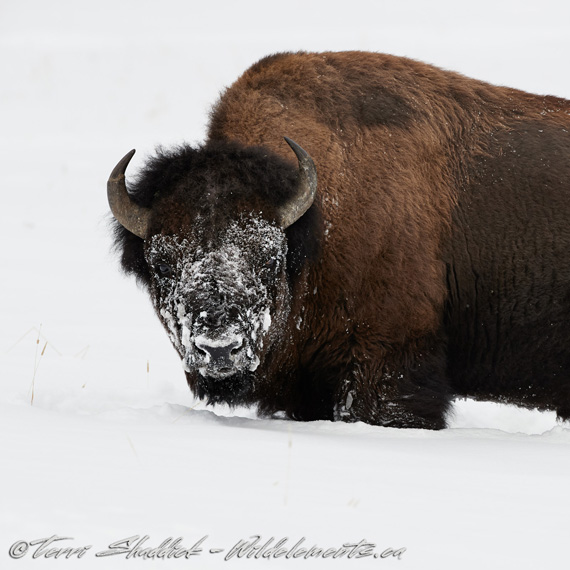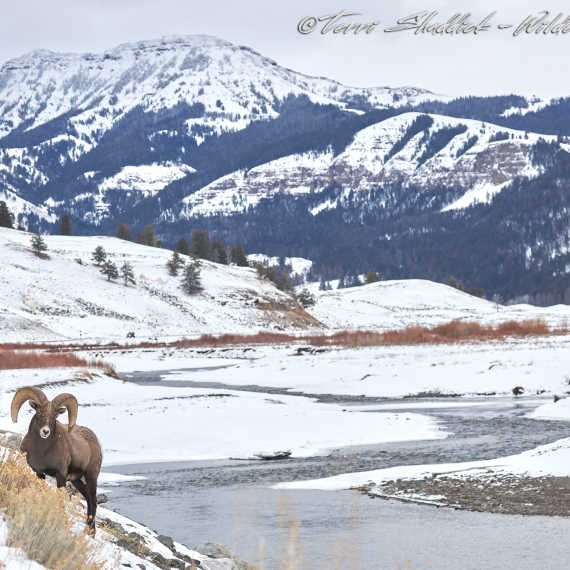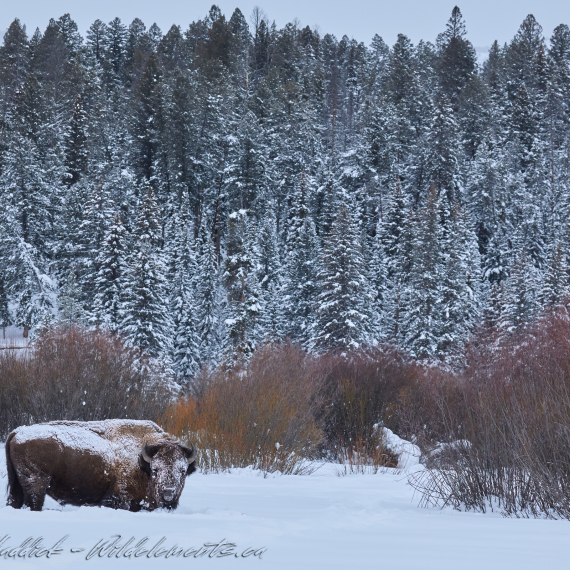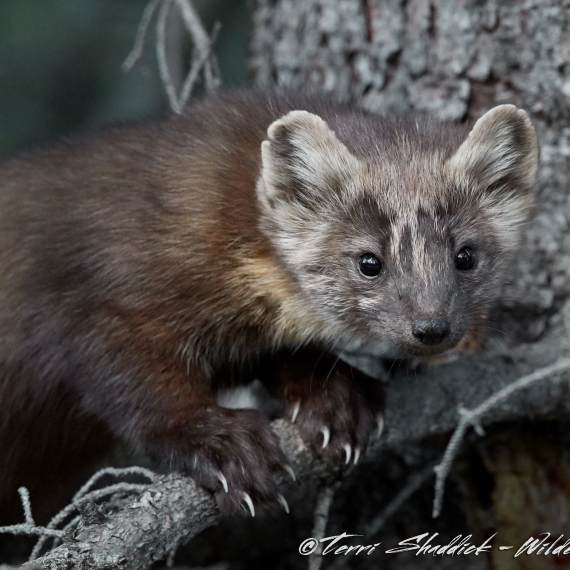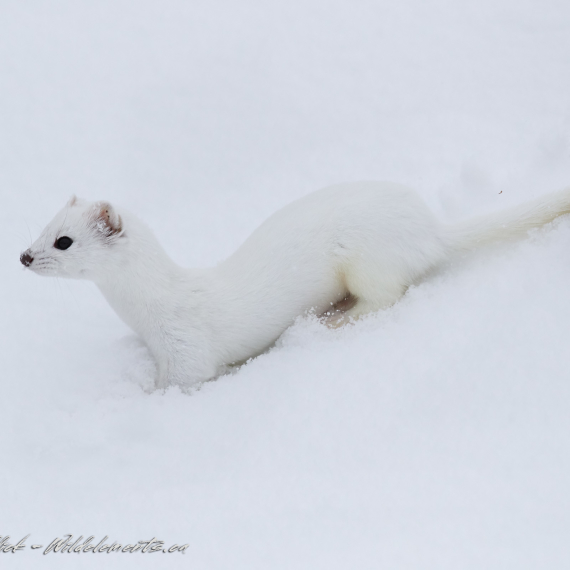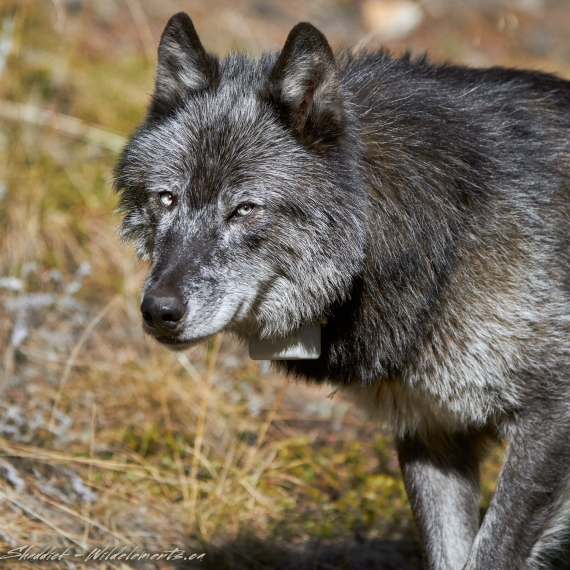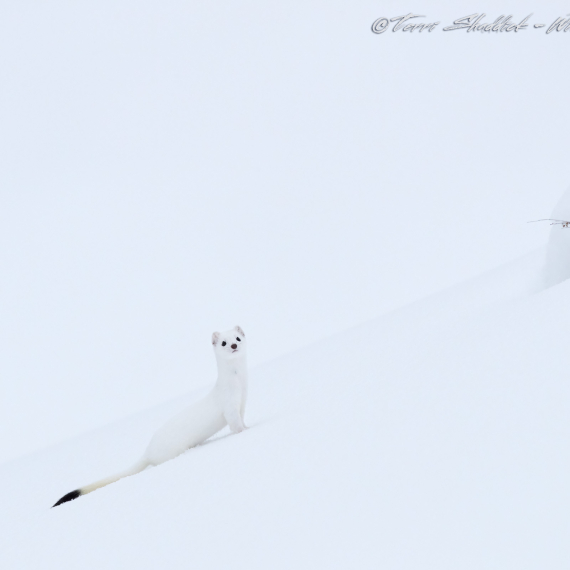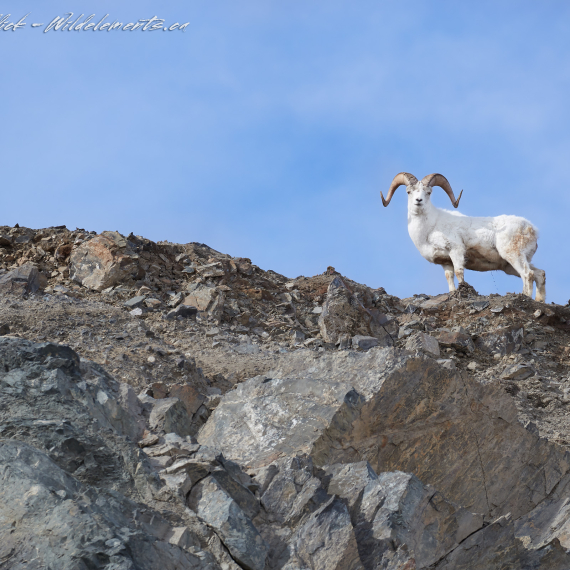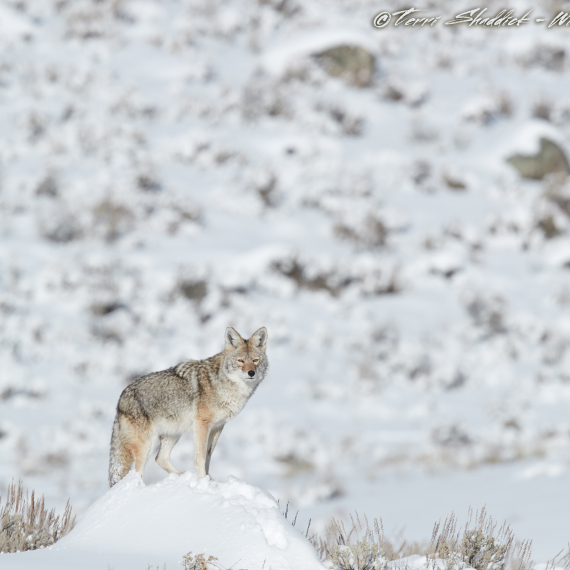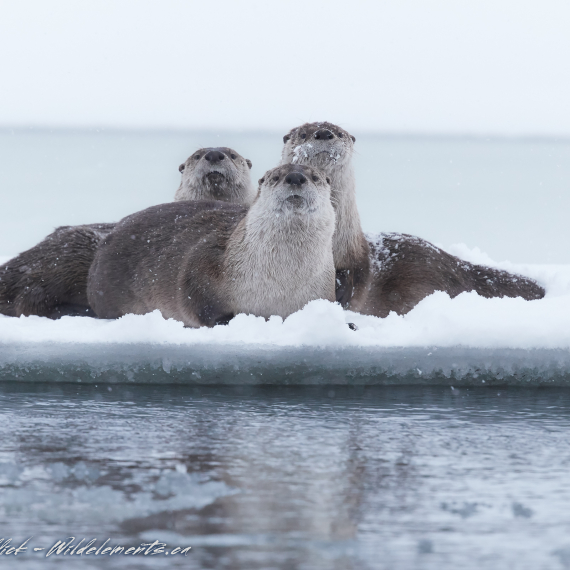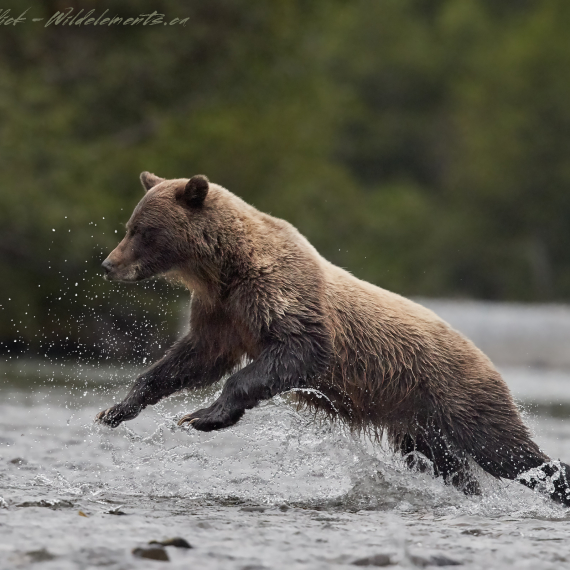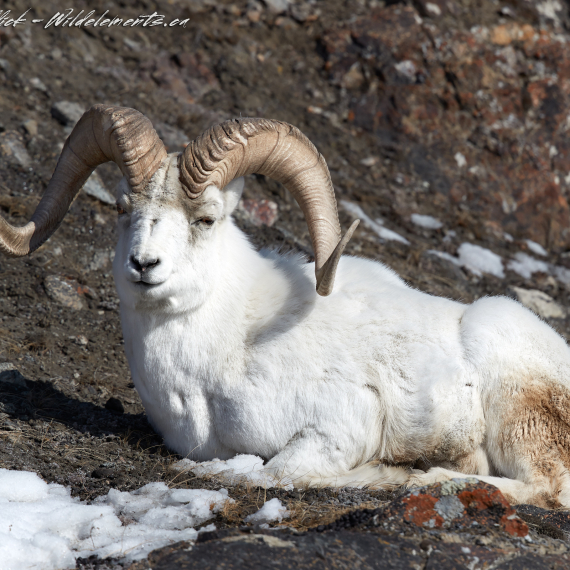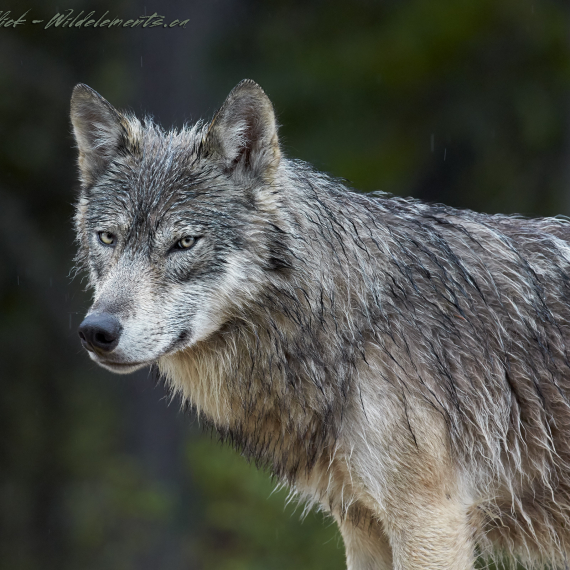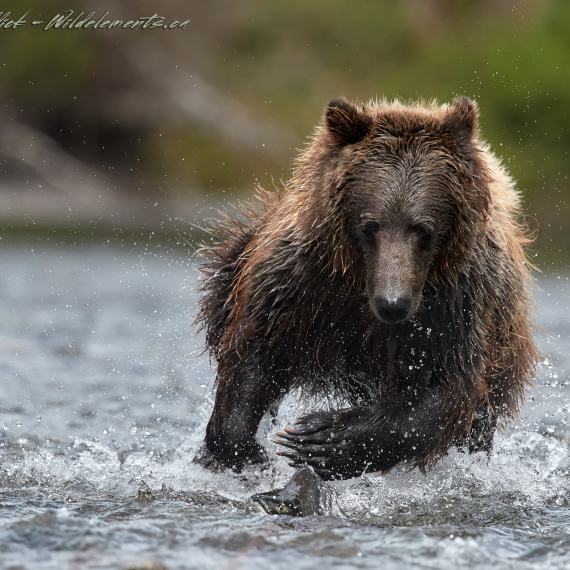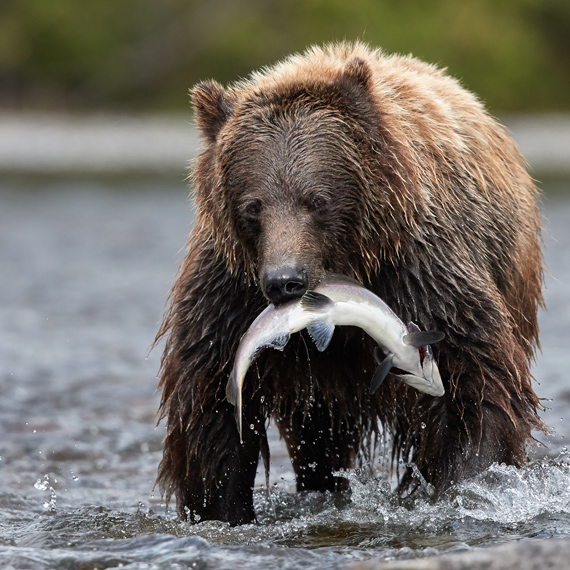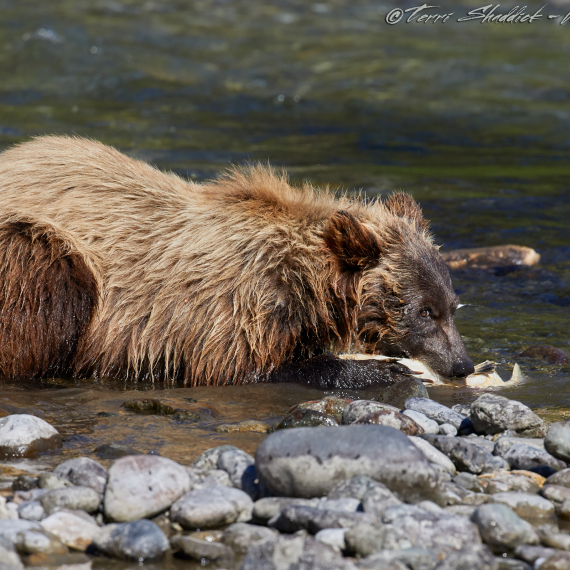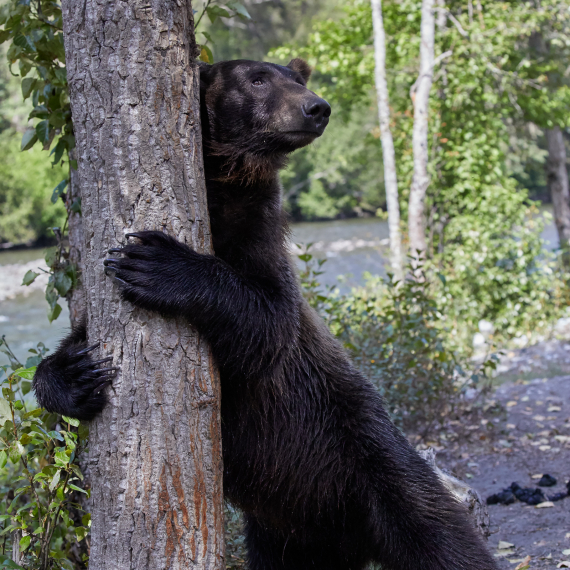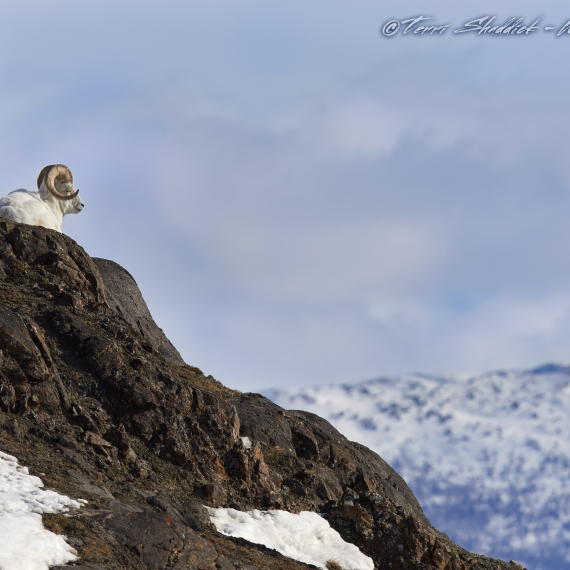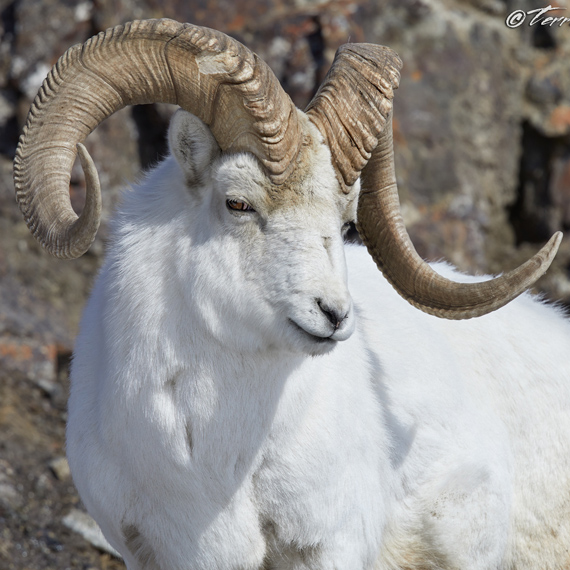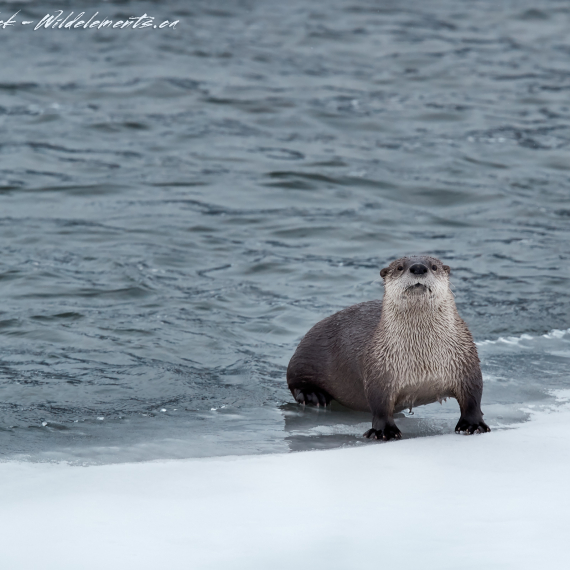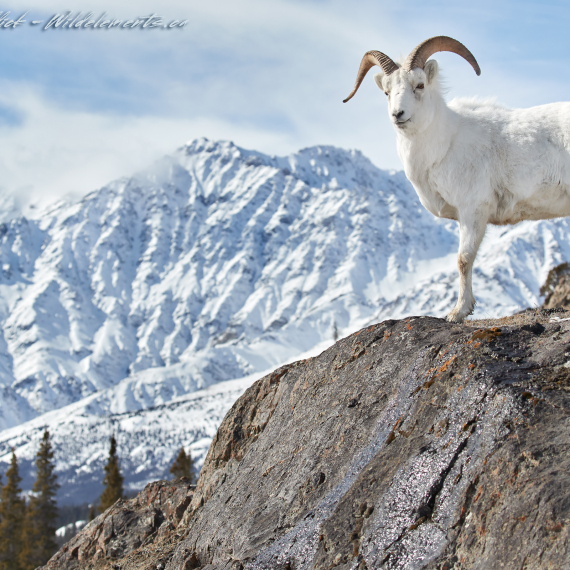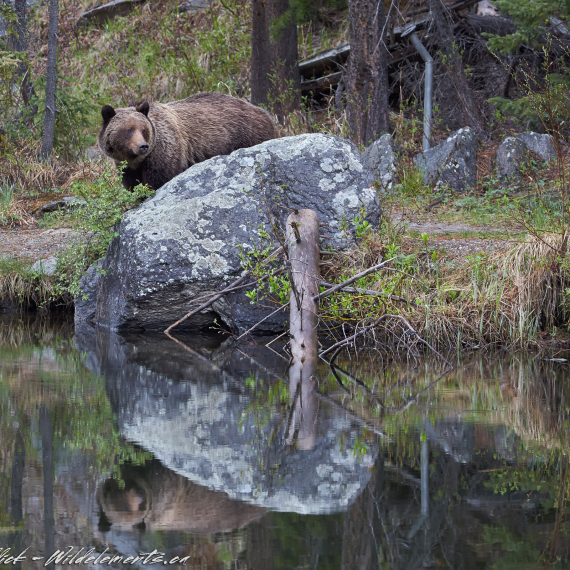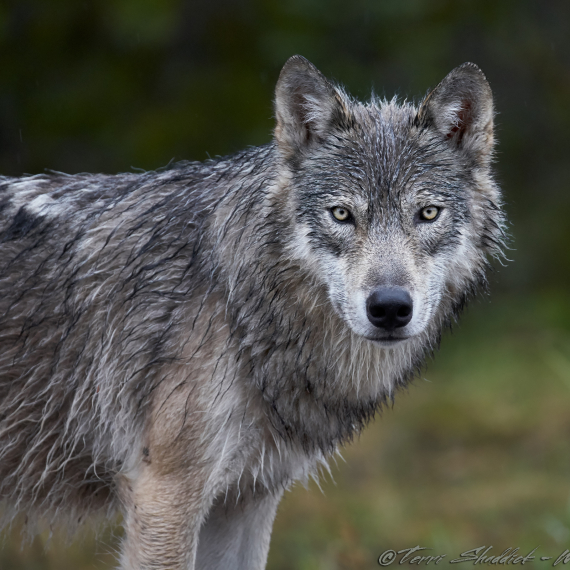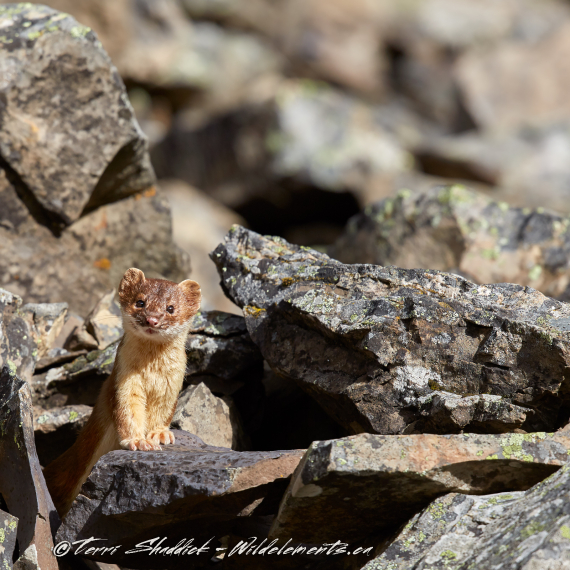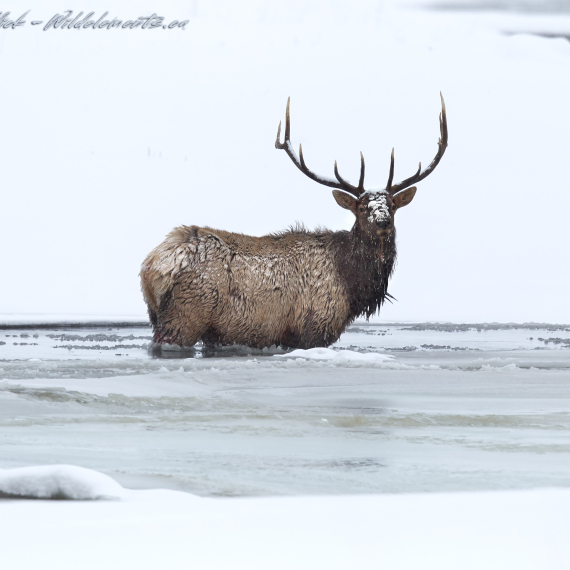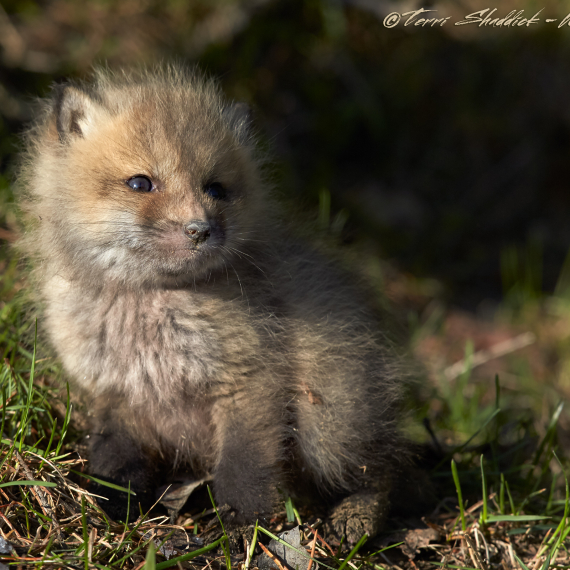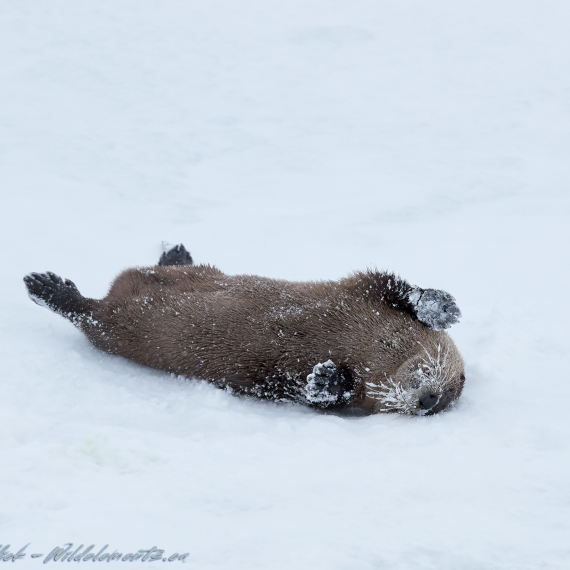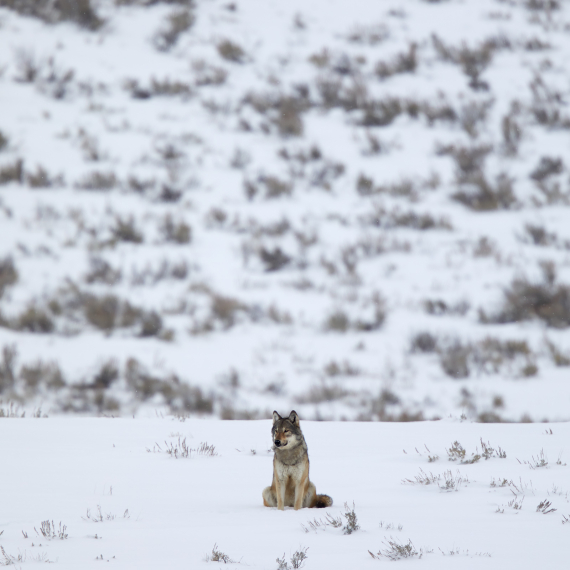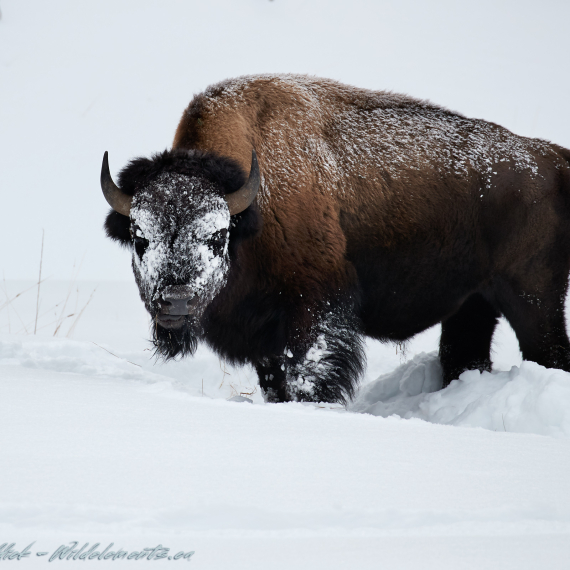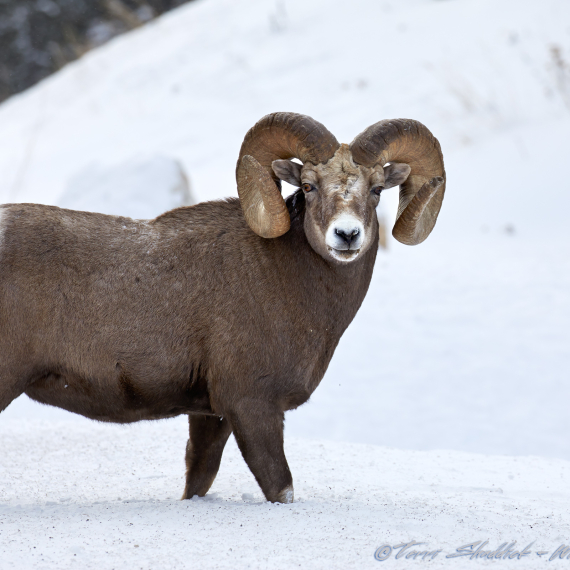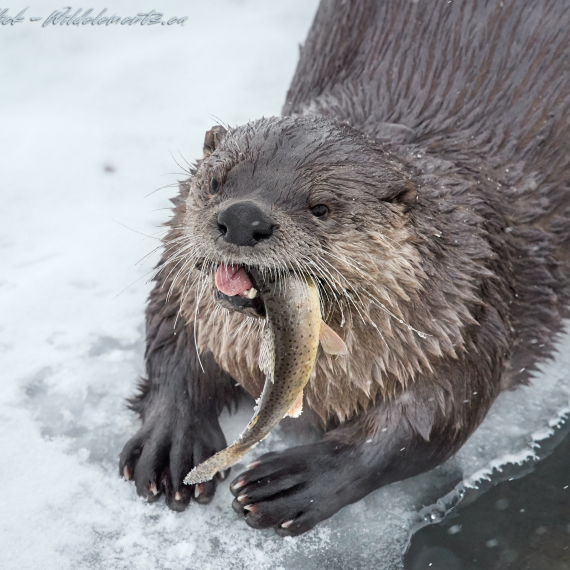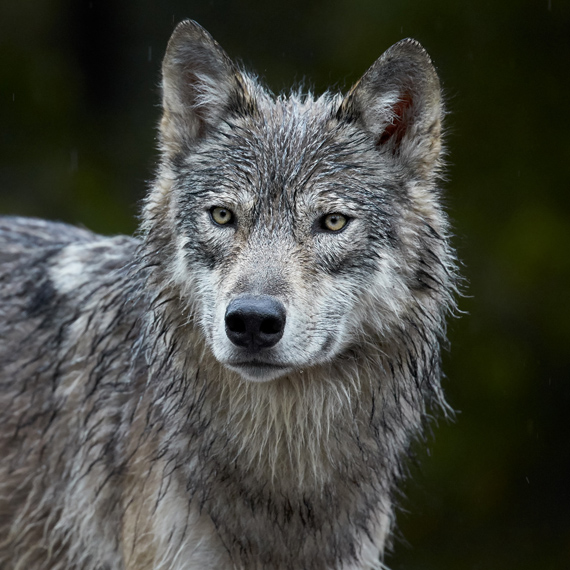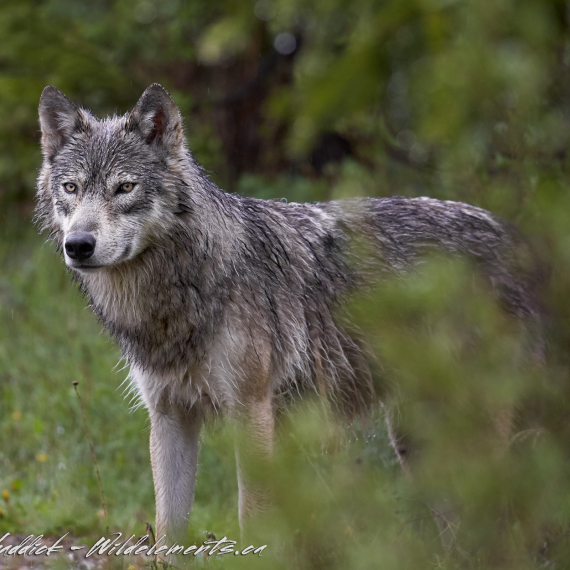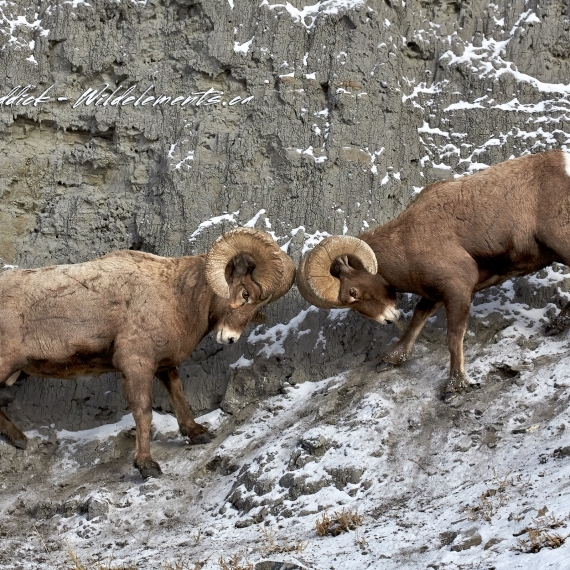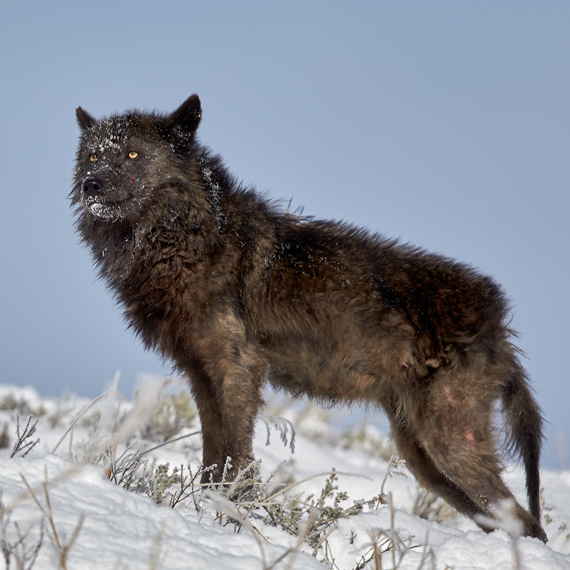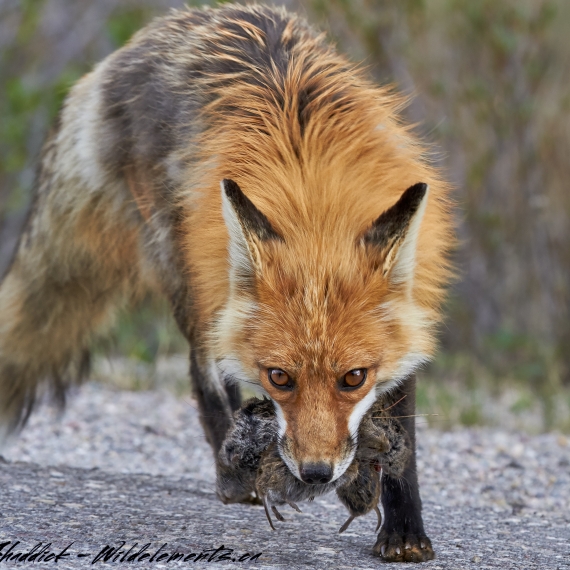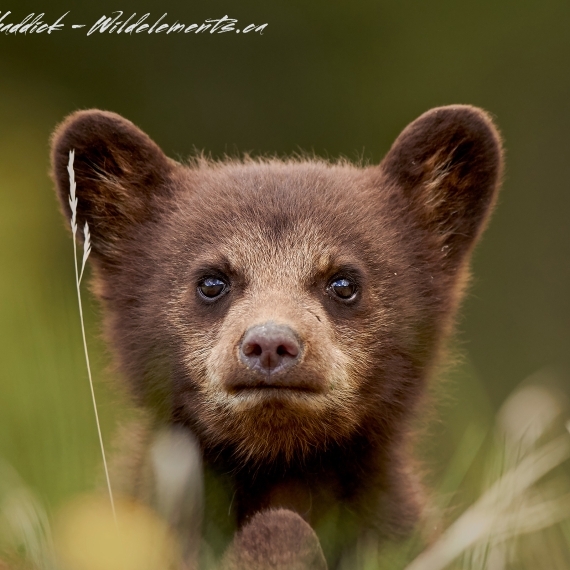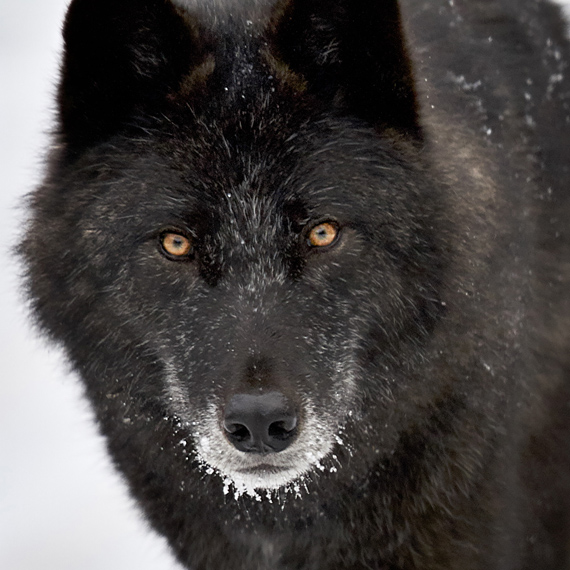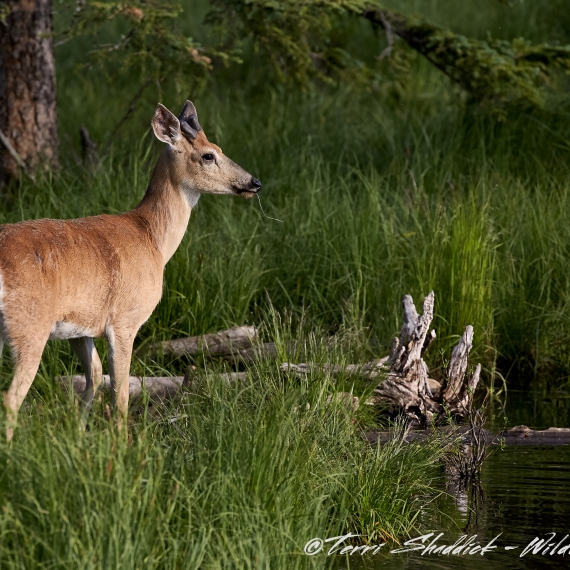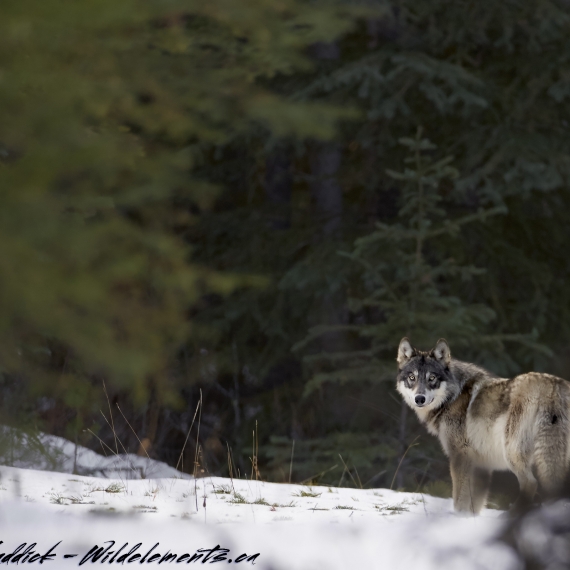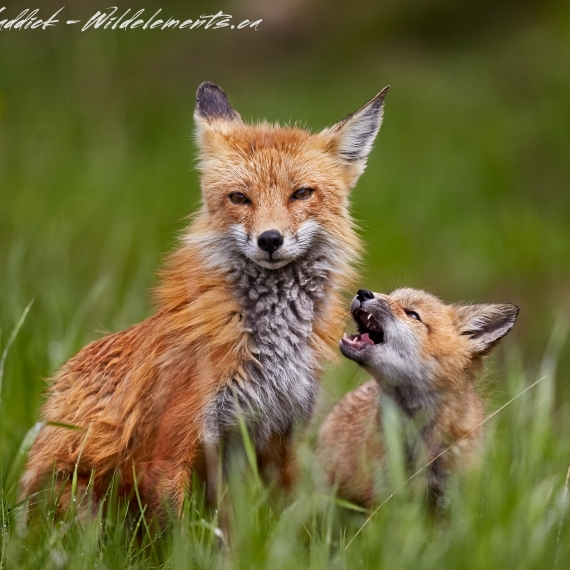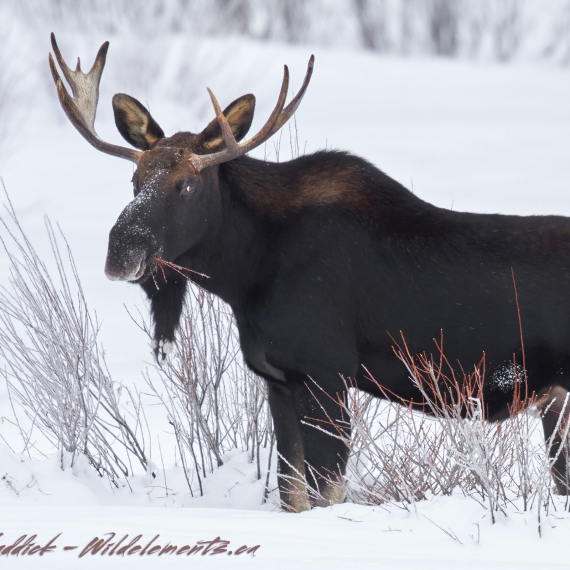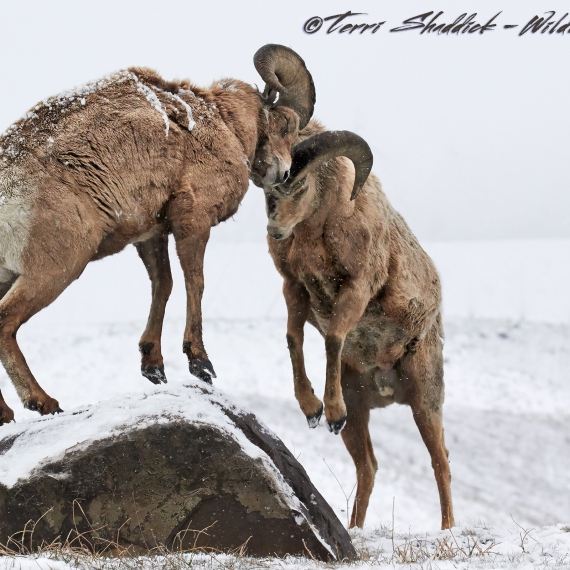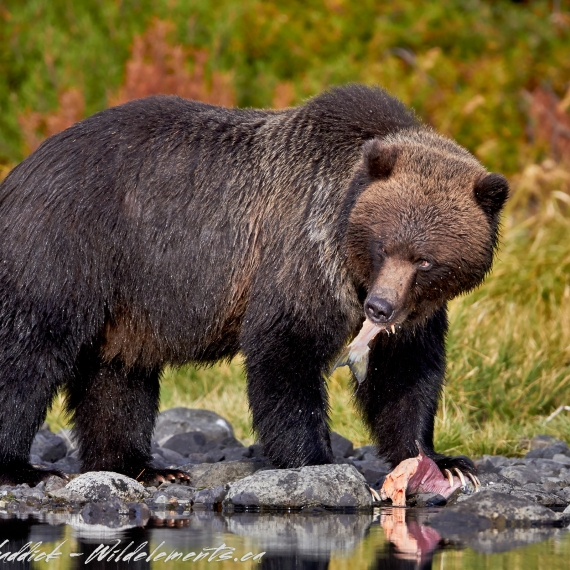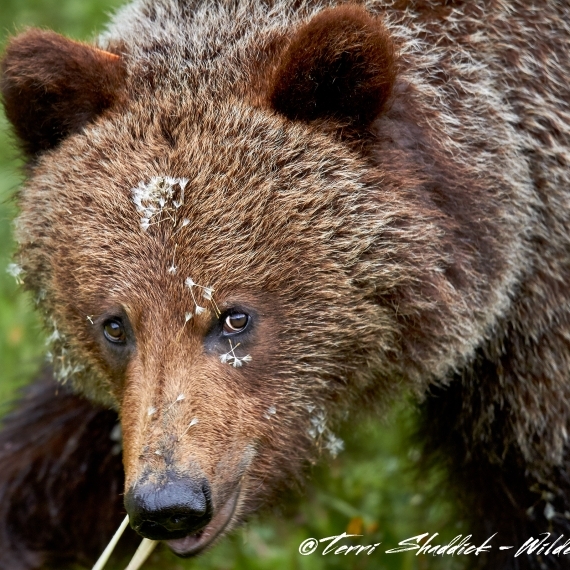Why do I like photography in the winter, well because this image would never be what it is without the added element of the Bison having a snow-covered face and a light dusting of snow on the rest of his body…it would just be a bison standing in grass and eating it. Actually my 2016 winter trip to Yellowstone was relatively warmer, and less snowy than in the past years, so getting an image like this was actually pretty tricky, and this one of just a few snowy bison that I even saw this year.
Hopefully we will soon be getting images like this in Alberta. In Banff National Park, they have implemented a five-year Bison reintroduction program, and recently released 16 Bison from Elk Island National Park into Banff. It will be a year and a half until these animals are roaming free in our parks, but I think it’s a step in the right direction.
The key to a shot like this is to getting your exposure “right”. Right will depend on what camera you are shooting with. I find the Canon cameras a better at highlight retrieval and not “blowing highlights”, Nikon cameras tend to be better with shadow detail retrieval, but more prone to blowing the highlights. When you have a dark subject on the snow, with my 1D X Mark II I would have over-compensated an image like this (this one in particular was +1), and complemented this with exposure blends of multiple layers when processing this image to get the right balance of darks and brights.
If you are interested in purchasing this image, or any other images on my site, contact Terri Shaddick at [email protected].
Taken: December 24, 2016
Location: Yellowstone National Park, Wyoming
Camera: Canon EOS 1D X Mark II
Lens: Canon EF 100-400mm f/4.5-5.6L IS II USM
Focal Length: 400mm
Aperture: f/7.1
ISO: 640
Exposure: 1/640
About this Image
Why do I like photography in the winter, well because this image would never be what it is without the added element of the Bison having a snow-covered face and a light dusting of snow on the rest of his body…it would just be a bison standing in grass and eating it. Actually my 2016 winter trip to Yellowstone was relatively warmer, and less snowy than in the past years, so getting an image like this was actually pretty tricky, and this one of just a few snowy bison that I even saw this year.
Hopefully we will soon be getting images like this in Alberta. In Banff National Park, they have implemented a five-year Bison reintroduction program, and recently released 16 Bison from Elk Island National Park into Banff. It will be a year and a half until these animals are roaming free in our parks, but I think it’s a step in the right direction.
The key to a shot like this is to getting your exposure “right”. Right will depend on what camera you are shooting with. I find the Canon cameras a better at highlight retrieval and not “blowing highlights”, Nikon cameras tend to be better with shadow detail retrieval, but more prone to blowing the highlights. When you have a dark subject on the snow, with my 1D X Mark II I would have over-compensated an image like this (this one in particular was +1), and complemented this with exposure blends of multiple layers when processing this image to get the right balance of darks and brights.
If you are interested in purchasing this image, or any other images on my site, contact Terri Shaddick at [email protected].
Taken: December 24, 2016
Location: Yellowstone National Park, Wyoming
Camera Specs
Camera: Canon EOS 1D X Mark II
Lens: Canon EF 100-400mm f/4.5-5.6L IS II USM
Focal Length: 400mm
Aperture: f/7.1
ISO: 640
Exposure: 1/640



